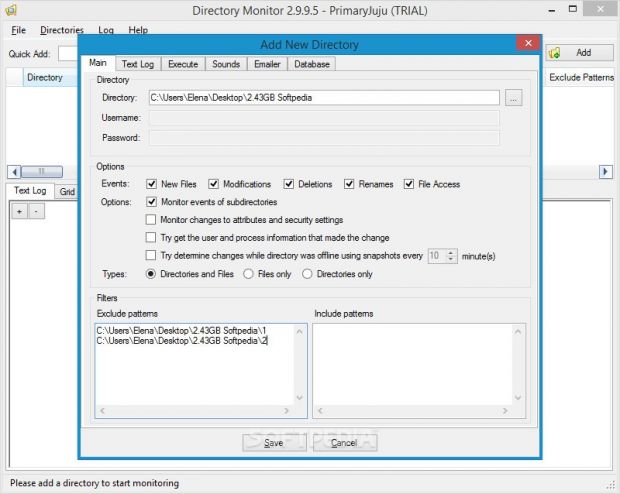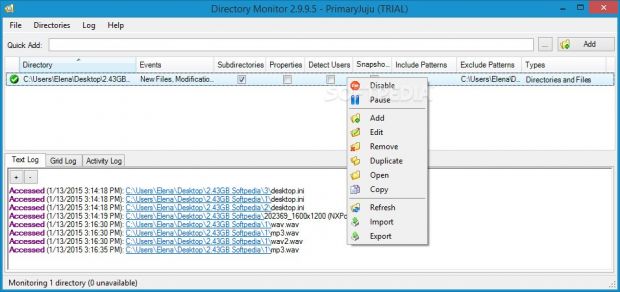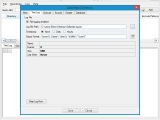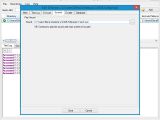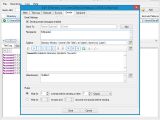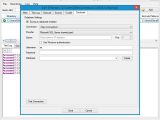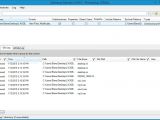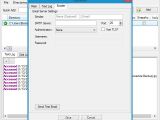An application capable of watching a given directory or drive on the computer brings a bunch of benefits to PC users. For example, they can find out if someone else has made file operations in an otherwise forbidden location, and even discover the exact files and folders created on the disk after software installations.
There is also the possibility to keep track of your own logging activity on the machine in order to retrace your steps and learn from your mistakes after a system crash. The options are endless, to be honest, provided that you're creative enough to think of a purpose for this type of tool.
During our searches for interesting and seemingly reliable folder watching software, we came across Directory Monitor. It's not much to look at, but it features a lot of options and in-depth configuration parameters made to optimize folder monitoring jobs and deliver accurate results. For example, it offers support for real-time monitoring of file modifications, deletion, renames, new files, and file access.
License type and installation
The trial edition can be tested for 21 days and there are no feature restrictions imposed during this time. Once this period expires, you can purchase the full package for $69 / €58.42.
NET Framework must be installed on the PC in order for this app to work. During Directory Monitor's setup procedure, you can customize additional components to create on the HDD. The full package includes plugins for text and grid logs, sound alerts and email notifications on important events, along with a database for storing the events in.
Administrative rights are necessary to get access to some of the program's commands.
A note on the free and trial editions
An important aspect that needs to be mentioned is that, by default, Directory Monitor is a free application when installed. That means that it doesn't come with a deadline. However, it lacks a lot of features compared to the full edition. You can test the trial by requesting a trial key via email.
Interface
The interface doesn't contain visually striking elements. Given its rather technical nature, Directory Monitor opts for a classical and neatly-structured appearance that doesn't make room for any doubts concerning how it works.
It creates an icon in the system tray area at startup that flashes when there are unread events, gets sent there on close, and pops up message balloons on events. Moreover, it integrates an entry in the Windows Explorer shell extension for quickly adding selected folders to the watchlist.
Indicate new directories to monitor
Multiple folders can be put together in the task list for monitoring changes. In order to add one, it is required to fill in a lot of details so that the app is able to take into account only your preferred types of events and nothing else unnecessary.
Apart from pointing out to a folder on the disk, you can pick the event type to keep an eye on, such as new files, modifications, deletions, renames, and file access. Subdirectories can be either included or excluded.
It is also possible to keep track of changes made to attributes and security settings, attempt to get the user and process information that made the change, as well as to attempt to determine modifications while the folder was offline with the help of snapshots (set the frequency for comparison).
Lastly, you can include or exclude patterns from the monitoring job when it comes to files only, directories only, or both files and folders.
Record log details to file and launch third-party apps
The log details will be shown in the main app window. However, a more convenient solution would be to enable data logging to file, so that you can inspect information at any later time. Directory Monitor lets you indicate a log file path and naming pattern (for creating multiple and sequential files).
What's more, the software tool can be asked to launch a third-party app when the events in question occur. You can also set up advanced parameters after consulting a list with available commands, star the third-party tool silently in the background, wait for it to exit after each event (sequential execution), establish a time to wait for if it doesn't exit properly, as well as set the delay time for the events, execution and inactivity.
Sound alerts, email notifications, and SQL database uploads
Sound notifications can be enabled by indicating a WAV audio track, and it can continue to play until the main screen is focused. Email notifications can be enabled after setting up a receiver name, email address, multiple recipients, subject, message, attachments, and delay times.
Provided that a Microsoft SQL Server (named pipe or TCP/IP), MySQL Server (named pipe or TCP/IP), PostgreSQL (TCP/IP) or Oracle (TCP/IP) database exists on the computer, you can save the logging details there too after filling in authentication details (the connection may be tested).
Manage the folder watchlist
Tasks can be paused and resumed, disabled, edited, removed, or duplicated. Meanwhile, the monitored folder can be opened or its path can be copied to the Clipboard. It is also possible to refresh information, as well as to export it to file (.xml format) and import it later.
A quick-add function for directory monitoring is available. You can clear all log or disable the text or grid log.
Configure program preferences
As far as app customization is concerned, you can set the program to run at every Windows startup until further notice, start minimized, stay on top of other windows, and regularly check for software updates.
You can also remove its entry from the Explorer right-click menu, choose the activity log level (nothing, errors, only, errors and warning, everything), hide balloon notifications or change their on-screen time, disable the tray icon's flashing for unread events, run the tool as a Windows background service, set global filters for patterns to include or exclude, pick the text formatting mode in the log window (normal or rich), and so on.
The Good
CPU and RAM consumption was minimal in our tests. Help documentation is available.
The tool can silently run in the background to monitor folder changes. It lets you enable sound alerts, balloon messages, and email notifications for important events, as well as record logging details to file or upload them to an SQL database.
It can monitor directories, subdirectories and files when it comes to new files, modifications, deletions, renames, and file access, allowing you to include or exclude any items from the list. Third-party apps can be scheduled to automatically run on events.
Those who want to skip the installer and run the tool directly from a pen drive may resort to its portable counterpart, called Portable Directory Monitor.
The Bad
The price for the full package seems a bit too expensive.
 14 DAY TRIAL //
14 DAY TRIAL // 